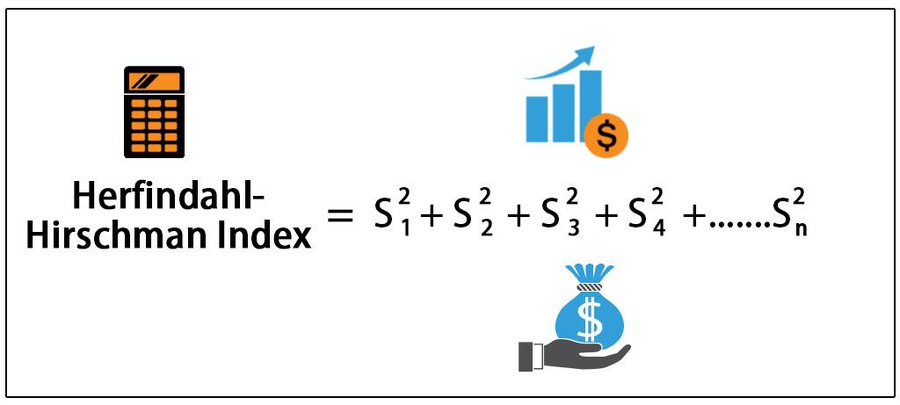Syllabus
GS-3: Indian Economy and issues relating to planning, mobilization of resources, growth, development and employment; Effects of liberalization on the economy, changes in industrial policy and their effects on industrial growth.
Context:
India’s Incorporation post-pandemic profit surge is closely linked to rising market concentration, as reflected in a higher Herfindahl-Hirschman Index (HHI).
About HHI
- HHI, is a widely used measure of market concentration. Basically it is a way to quantify how competitive (or monopolistic) an industry is.
- Albert O Hirschman developed an early version of the index in the 1940s, which was later refined and popularised by Orris C Herfindahl.
- The tool is now commonly used by antitrust regulators.
- It assesses whether a market has become too dominated by a few large players and takes into account the relative size distribution of the firms in a market.
Calculation and Interpretation
- The HHI measures market concentration by squaring the market share of each firm in a sector and summing the result.
- The higher the score, the more control is concentrated in the hands of fewer players.
- It approaches zero when a market is occupied by a large number of firms of relatively equal size and reaches its maximum of 10,000 points when a market is controlled by a single firm (pure monopoly).
- The score break-up is:
Score below 1,500 indicates a competitive market.
Score between 1,500 and 2,500 is moderately concentrated.
Score above 2,500 means the market is highly concentrated. - The more concentrated the market, the higher the HHI, and the greater the pricing power firms typically hold.
- As a result of rising HHI, one or two firms dominate, they can set prices, influence supply chains, and shape consumer options, often at the expense of competition and innovation.
Index’s Observation in India
- In FY25, the average HHI across eight major Indian sectors jumped to 2,532, crossing into the ‘highly concentrated’ zone for the first time in over a decade up from 1,980 in FY15 and 2,167 in FY20.
- These figures demonstrate growing pricing power, shrinking competition, and rising profit margins.
- In six of the eight sectors studied, including telecom, paints, aviation, steel, two-wheelers, and cement market concentration has reached thresholds considered ‘high’ by the index.
- Only paints and two-wheelers have seen a modest decline in concentration over the past decade.
- The rising HHI scores are not accidental, a combination of regulatory reforms and economic shocks has steadily tilted the playing field toward bigger players, who are generally better equipped to survive and even benefit from major economic and policy challenges.
- Market based regulatory reforms are visible through dynamic changes that has occurred in the form of:
Mergers and Acquisitions (M&As)
Exit of weaker/smaller firms post-COVID
Organic growth of large firms
Implications of Market Dominance by Few Firms.
- Price-Setting Power: As competition fades, dominant players gain the power to raise prices and protect margins. There is little pressure to keep prices affordable, in the absence of sufficient competition.
- Reduced Consumer Choice: Concentrated firms can push through price increases without fear of losing market share which results in the situation where consumers are grappling with higher prices but limited choices.
- Hampering innovation: When one or two firms dominate, they can set prices, influence supply chains, and shape consumer options, often at the expense of competition and innovation.
- Threat to Competitive Ecosystem: A combination of regulatory reforms and economic shocks has steadily tilted the playing field toward bigger players, who are generally better equipped to survive and even benefit from major economic and policy challenges resulting in barrier for smaller firms and thinning competition.

